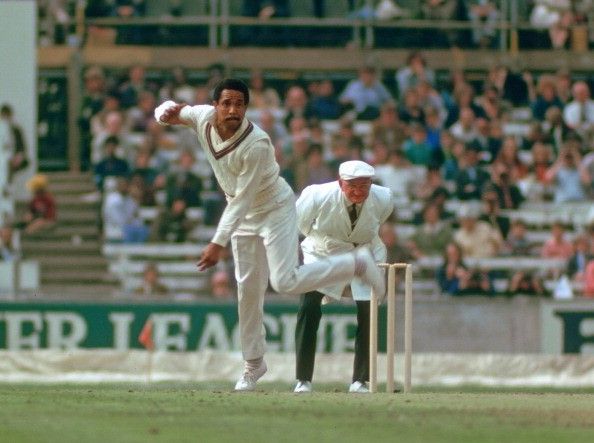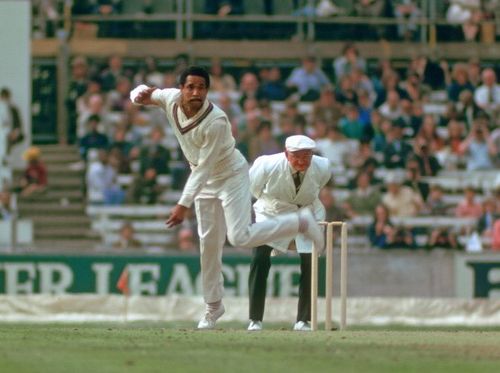
Stats: Some lesser known facts about Sir Gary Sobers

The greatest all rounder that the game of cricket ever saw, Sir Gary Sobers would perhaps come second just to Sir Don in terms of stature and legacy. Bradman himself called this superlative West Indian the “five-in-one cricketer”, and with good reason: apart from being an outstanding batsman and fielder, Sobers the bowler was so versatile that he could bowl three different styles - left-arm seam and swing, slow left-arm orthodox, and left-arm wrist spin.
He made his first-class debut in 1952, against the then touring India. The 16-year-old impressed the selectors with his consistent line and length and the figures of 22-5-50-4 and 67-35-92-3 and earned his Test debut two years later against England.
His talent was apparent during the course of a resounding defeat at the hands of England at The Oval in the summer of 1957. In extremely difficult batting conditions, in which West Indies were bundled out for 89 and 86 in their two innings, Sobers scored 39 and 42. No other West Indian batsman touched 30 in either innings.
His batting graph soared from 1958 and in his third Test match of the year, against Pakistan in Kingston, he scored a monumental unbeaten 365. It was at that time the world record for the highest Test score, and stayed that way for the next 36 years, which is the longest time that any batsman has held this record.
He is also the youngest player to score a Triple Century in tests. That 365* vs Pakistan at Kingston in 1958 came when he was just 21 years and 213 days old. He overcame Sir Don Bradman's record who scored his 334 vs Eng at Leeds in 1930 at the age of 21 years and 318 days.
Scoring 300 runs and taking 20 wickets in a series is no mean feat - it's only been achieved 15 times in the entire history of Test cricket. But what makes Sobers stand apart is that he managed it three times on his own, twice against England, and once against India.
In fact even in his early days he averaged nearly 63 in 79 matches, which was easily the best during that period. And if we talk about his bowling, in the eight years when Sobers was at the peak on his bowling powers, he was among the best in that aspect too: only three bowlers took more than 100 wickets at an average lower than Sobers' 27.93.
He was also the first player to complete 8000 runs in Test cricket and correspondingly the fastest to score 8000 Test runs (in 157 innings). That record was later broken by Sachin Tendulkar in 2002 when he did it in his 154th innings.
Some more facts
-
Garry Sobers was the 3rd player after Wally Hammond and Colin Cowdrey to complete 100 catches as a fielder in his Test career.
-
He scored 722 runs, took 20 wickets and caught 10 catches in a series of 5 Test matches against England in June 1966. No one else has managed even a combination of 500 runs, 10 wickets and 10 catches in a series.
-
He was the first to score 3000 Runs, take 200 wickets and grab 100 catches in Tests. Only 3 others have managed to do it after him - Sir Ian Botham, Shane Warne, and Jacques Kallis.
-
He also took 117 wickets of his 235 test wickets as captain. They are the 3rd most behind Imran Khan's 187 and Richie Benaud's 138.
-
He became the first batsman to hit six sixes in an over in first-class cricket. He achieved it while batting for Nottinghamshire vs Glamorgan at Cardiff on August 31, 1968, off the over bowled by Malcolm Nash.
-
Comparison with Jacques Kallis
A comparison often drawn for Sobers is with South African Jacaque Kallis. Sobers played 93 Tests (retiring at 37) Kallis played 166 (retiring at 38). Sobers scored 8032 runs, Kallis scored 13289 runs. If Sobers played 166 Tests, hypothetically by extrapolation, he would have had 14337 runs at the rate he was scoring per Test played.
Although very speculative, it's the best comparison we have statistically. Again in bowling, Sobers had six 5-wicket hauls, Kallis has five. Sobers average per wicket was 34.03, Kallis' average was 32.65. These stats make for excellent reading but are difficult to compare, one thing for certain Sobers bowled a lot more than Kallis during his career.